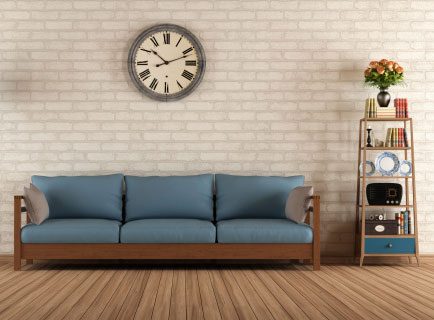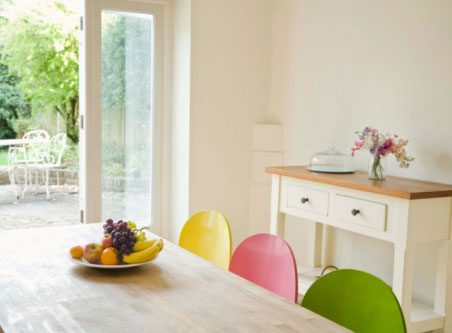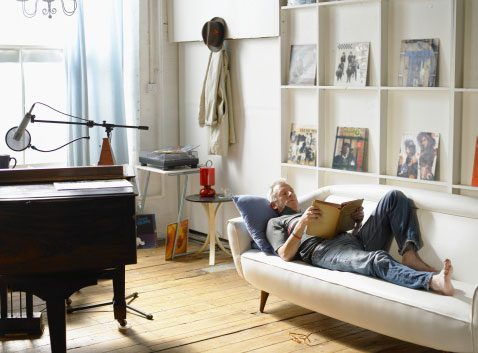Most people play with their art and accessories, trying to make the room feel better. But if the furniture placement in the room is wrong the room will never feel right. So you need to start there. How do you go about placing the furniture in a room?

Pay Attention to the Balance in the Room
– Look at balance from the viewpoint of “visual weight.”
– Elements which are visually forceful and attract our attention are things like unusual shapes, bright colors, dark values, and variegated textures.
– Smaller items that have these qualities can often balance larger items that do not. For example, a bright red chair will carry a lot of visual weight in a room with all beige furniture.
– Patterns tend to carry more visual weight than solids.
– If you have a large fireplace at one end of the room, look at balancing it with a large piece on the opposite wall. Once the furniture is placed, stand in every corner of the room and check the balance.

Look at the Flow of the Room
– Take note of all the natural entries and the natural traffic patterns that the activities for the room will need. These must be accessible at all times.
– Think about the kitchen or dining table. Are the table and chairs accessible from all sides? The same should also be true for your living room seating. Arrange the room so you can walk into it without being stopped by furniture. Every room should invite you in, not stop you at the doorway.
– A common mistake is to put furniture against the walls. People have to scream at each other to be heard. Also, the space in the middle of the room is empty, so there is no balance in the room. Bring the furniture closer to the center of the room.
– Make sure all doors and windows are clear. Even if the door is never used, you must keep it clear. Otherwise the room will feel small and crowded. If you need to put something in front of a window, it must fit below the windowsill. If it’s higher than the windowsill, try angling it toward the window instead of putting it straight across. If you can at least walk up to part of the window, the room will feel more spacious.

Watch For Invisible Walls
– Watch for invisible walls that are placed there by the architecture in the room. For example, in an L-shaped living room/dining room; if there’s a railing in the room, there is an invisible line that extends from the railing, creating an invisible wall that has to be worked with. If there is a bulkhead in the ceiling, that designates a separate room. In these cases, you need to have furniture on one side or the other, not half-way between ‘rooms.’
– You can also create invisible walls using a sofa or chair, a tall backless bookcase, or 1 or 2 large plants or trees placed perpendicular to a wall of a room. It’s amazing how little it takes for your eye to see it as two rooms.

Create Movement Around the Room
– Eliminate static lines when placing furniture and accessories.
– Create a variety of levels that keep the eye moving around the room. But do not create abrupt transitions. For example, you wouldn’t have a very small piece right next to a very tall piece. You want to avoid peaks and valleys as your eye undulates around the room.
– Look at softening tall pieces with a plant or a lamp or a piece of furniture that is mid-range in height from the top to the bottom of the tall piece. Think of balancing low, medium and tall items around the room, creating gradual movement between the pieces.
If you take these things into account when placing your furniture, your room will feel calm, elegant and “pulled together”. Also, if you need a little assistance arranging your furniture try an accredited Interior ReDesigner from casaGURU. Happy furniture arranging!
For great articles, tips, inspiration and more, visit www.casaGURU.com-The smartest way to find licensed and insured house experts-from home stagers tocontractors to home Inspectors and realtors.